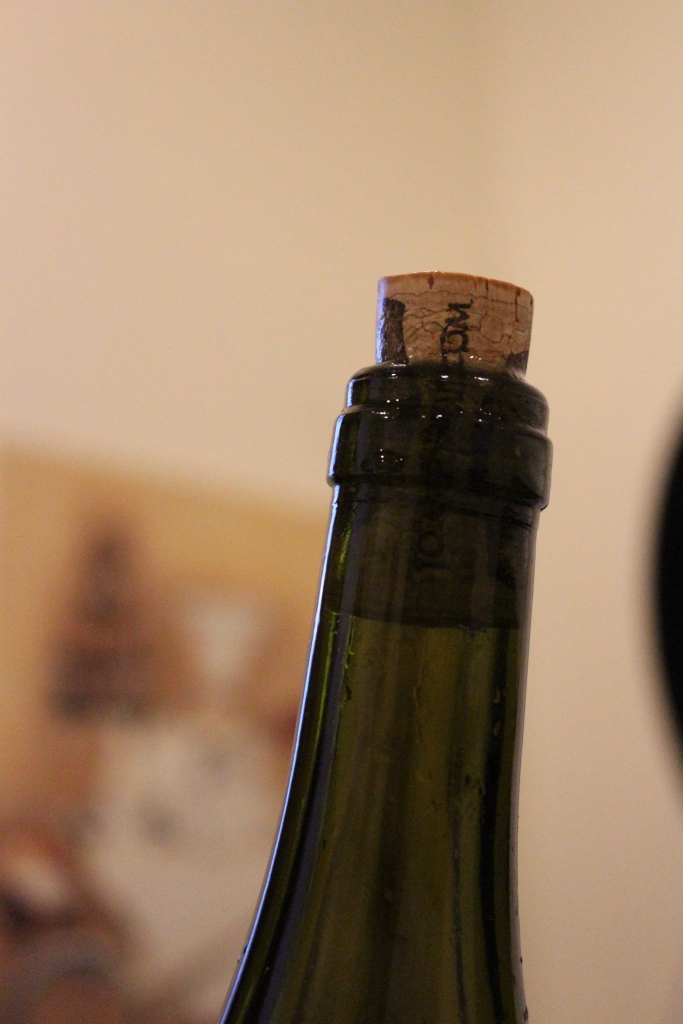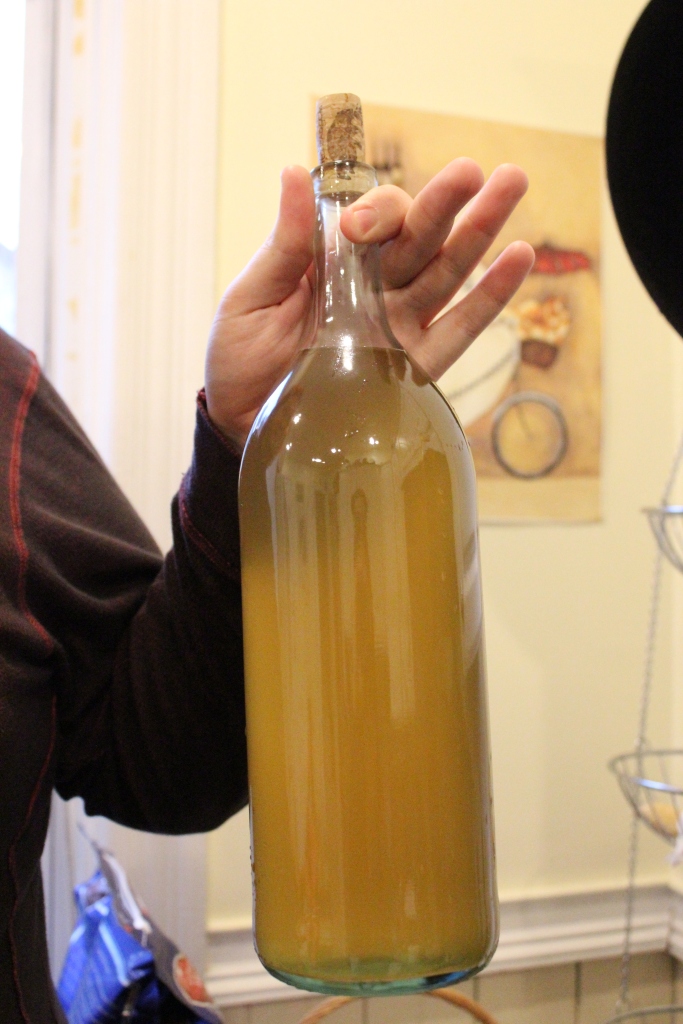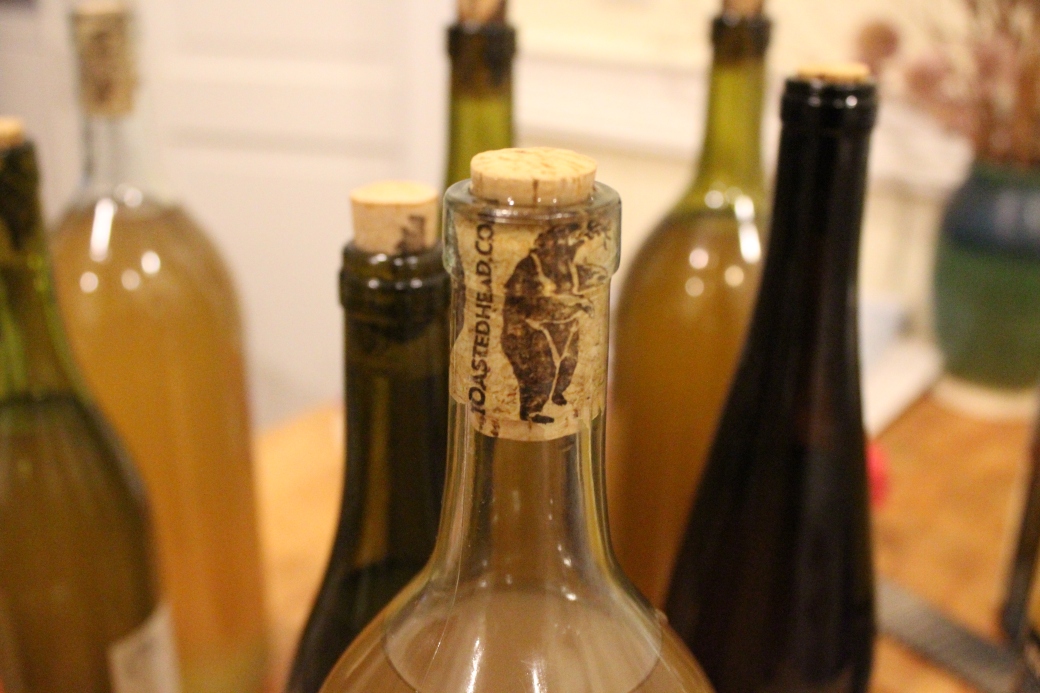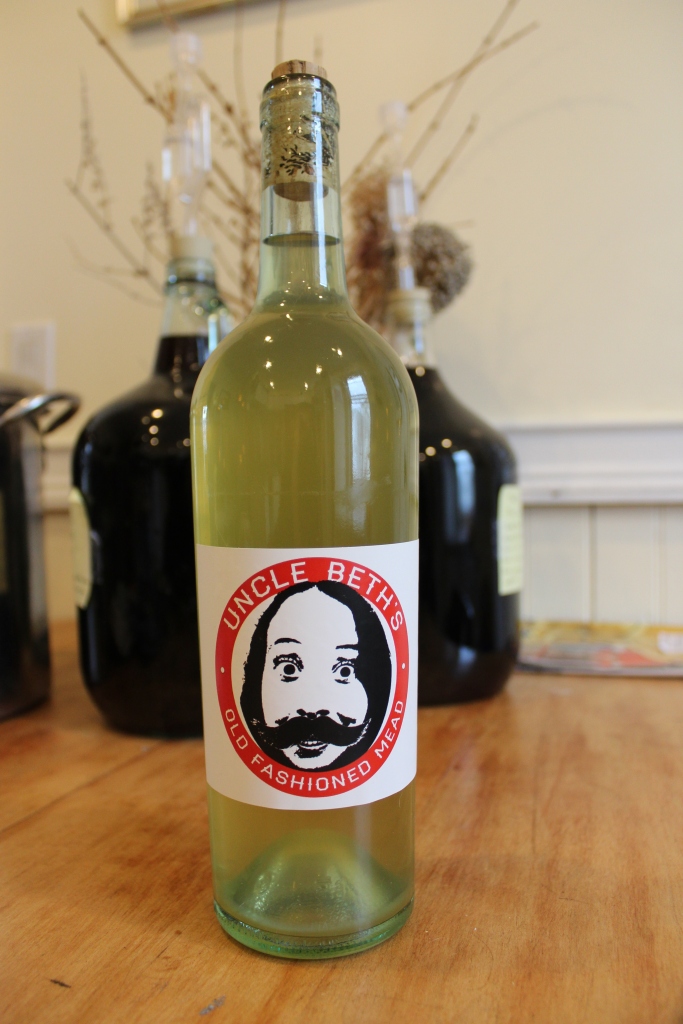It’s about time I had some good mead news.
My first big batch leaked all over the floor, and I was too depressed and sticky to even write about it. My second batch started out strong, but then it just kept getting stronger and bubbled longer than it had any right to.
But this batch… is still the second batch. It’s the same mead, hastily thrown into four separate containers to try to stop fermentation because I didn’t know what else to do. But here’s the thing:
It’s actually good!

I’d been dreading opening up these fermenters, and I put it off for a few months. This may actually have been the best thing I could have done. All the mead makers I’ve talked to have said the same thing – if you don’t like it now, just forget about it for a while.

Tommy was visiting from Texas, which got me inspired. He’s always up for some good blog fodder. We hauled up the mead and gave it a taste. It was outrageously boozy – everything I make is. I need to get a better handle on the fermentation process so I can stop warning people not to pour a full glass every time they open a bottle of wine.

Five gallons of mead is a heck of a lot of mead. My parents have been stockpiling bottles, though, and handing them off every time they see me. It felt excessive until I actually needed them. I was especially grateful for the big double wide bottles, because they gave us extra time to think between fillings.

The corking was a bit of a pain. The corker is inherited from my dad’s wine making days and is made of plastic older than I am. You have to press with all your strength for it to work, but I’m worried all my strength will snap it in half. Some corks didn’t make it as far as others and had to be redone later.

When all was said and done, we had 10 normal bottles and 7 double sized bottles. I’d painstakingly removed the labels from a few, but when the mead kept flowing we had to break out the reserves. I gave some away before I had a chance to scrub their labels off, but the ones I kept got cleaned up to make way for… wait for it…

Uncle Beth’s Old Fashioned Mead. Ben designed it, and I’m very happy with how it turned out. My dad’s always had a mustache, and I’m carrying on the tradition. The labels were printed by Bottle Mark and came extremely fast. I’m not sure I’m wild about the red, but for a first run I think it’s great.

And it feels a heck of a lot more professional than ball point pen on stickers.
Gotta love Uncle Beth!
LikeLiked by 1 person
The mead still looks a bit cloudy. This site may have some answers why:
http://www.eckraus.com/blog/mead-still-cloudy
From my experience, it is often either not enough nutrients for the yeast, too cool fermentation temperatures, putting on the airlock before the primary fermentation is done, or not racking and topping off properly. But the above site will give a more detailed list with helpful information and solutions than my short list provides.
But keep it up. Practice makes perfect. Took me years to perfect my techniques.
LikeLiked by 1 person
Well then I know which one it was! I’ve been following this tutorial, which says to put the airlock on at the beginning of fermentation.
http://www.homebrewersassociation.org/how-to-brew/mead/making-mead/
All the wines I’ve made have been open to the air during primary fermentation, but beer is always closed, so I didn’t think it was too strange.
Do you always keep the fermenter open during primary?
LikeLike
Mead is more like making wine than beer. Yes, I always aerate my wine (be they grape or fruit wine) during the primary. Which includes stirring of the wine at least twice a day (which also pushes down the “cap” floating in the top if one is there (there really is not much of a cap on white wines or mead)).
Also see:
http://www.eckraus.com/blog/when-to-aerate-a-wine
For small batches (i.e. under 10 gallons) just cover the primary container with a cloth (to keep out things like fruit flies).
When to put on the air lock is more complex. One rule of thumb says to add the airlock after a 3 to 5 days. Another says to airlock when the fermentation starts to visibly slow. These are not a bad methods and are usually more often correct than not. But depending on temperature, yeast activity, and a number of other factors, it may take longer than just a few days to really complete the primary. A more complex method is to use a hydrometer, measuring the sugar content before any yeast is added, and then measure daily. When the sugar has fallen by 60%, put on the airlocks and do not disturb the vats after that until it is time to rack. If you put on the airlocks too late, you of course can just make a bucket of vinegar.
Things can get even more complicated at times (i.e. primary slows, but hydrometer still shows a lot of sugar). Then a more complex action I will do is to remove the cloth, put on the lid on the vat, but in the bung hole instead of the airlock just insert some bit of cotton wadding (again to keep out flies). This still allows some air in for the yeast, but will allow the carbon dioxide to also build up inside and insulating the must from too much oxygen at once. Continue daily hydrometer readings until it it time to airlock the vat. I use fermentation vats from 15 to 50 gallons (60 to 200 l), but the process is exactly the same for a 5 gallon batch.
It takes some trial and error (and learning the art wine making), and I have lost quite a bit of wine getting experience in my early days (who hasn’t?). But learning and improving is a large part of the fun, I think. And once you get really good at the basics (and you will), you can really start to experiment with different types mead, such as adding different fruits to the must, etc.
LikeLiked by 1 person
This is so helpful – thank you!
What you described exactly how I’ve done my fruit wines, but I thought mead might be different for some reason.
One of my very first fermentation projects was a gallon of mead, which I did with the airlock method. It worked well enough, so I just scaled it up to five gallons. I suppose with five times the sugar and who knows how much more yeast, though, the fermentation time got scaled way up, too. (The stuff bubbled literally for months).
I just got some more honey to make another 5 gallon batch, and I’ll definitely try the open primary this time. I’ll keep you posted!
LikeLiked by 1 person
Pingback: Uncle Beth’s Home Grown Mead | Liz Baessler